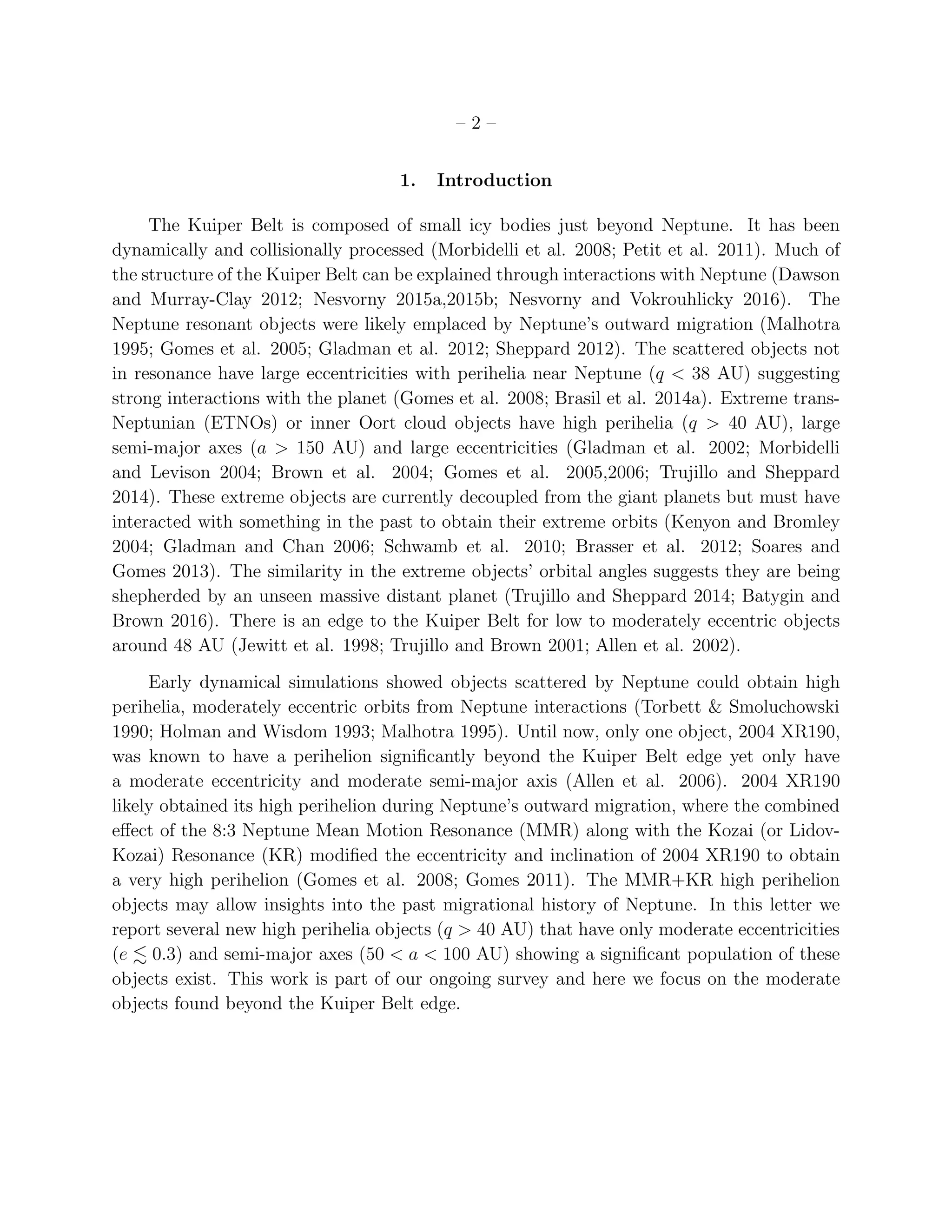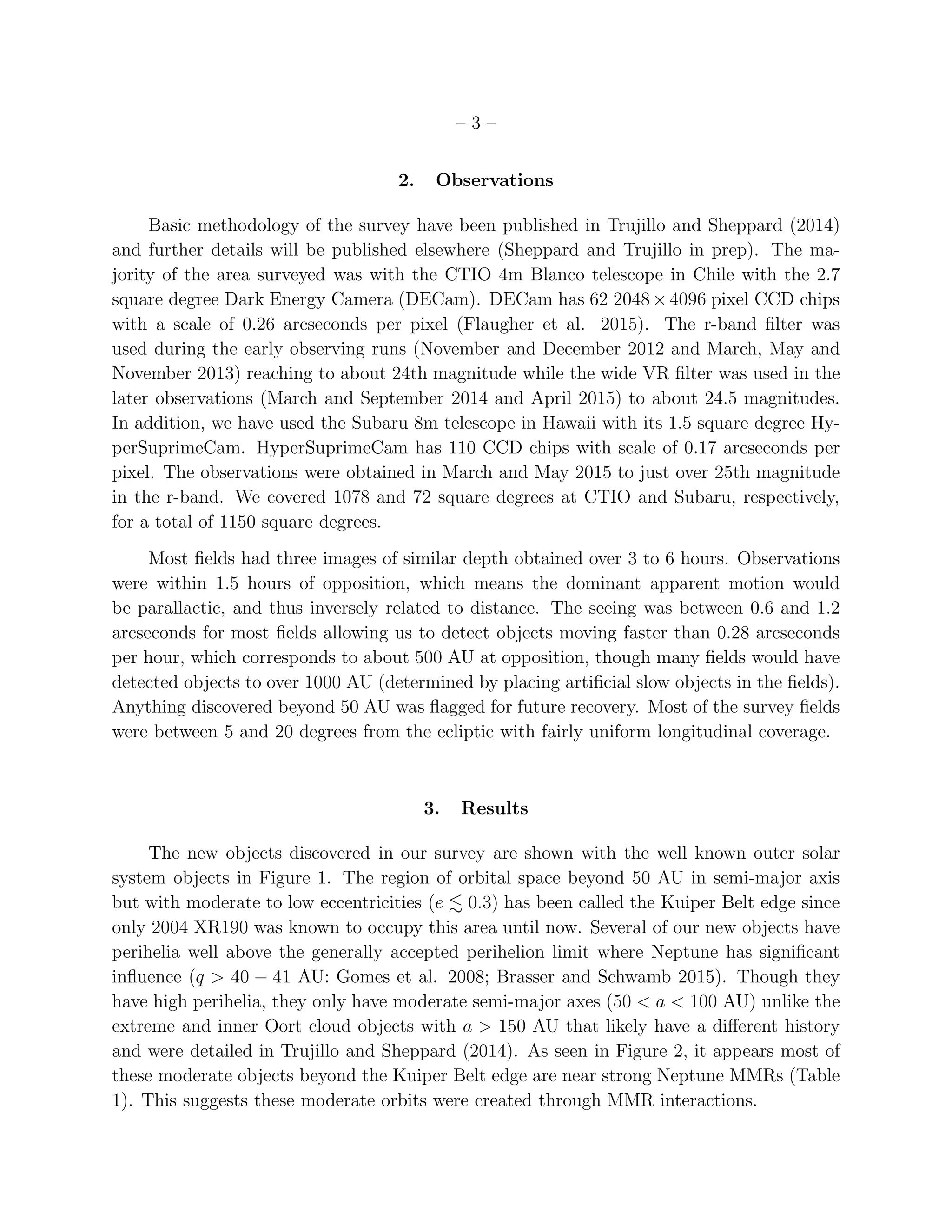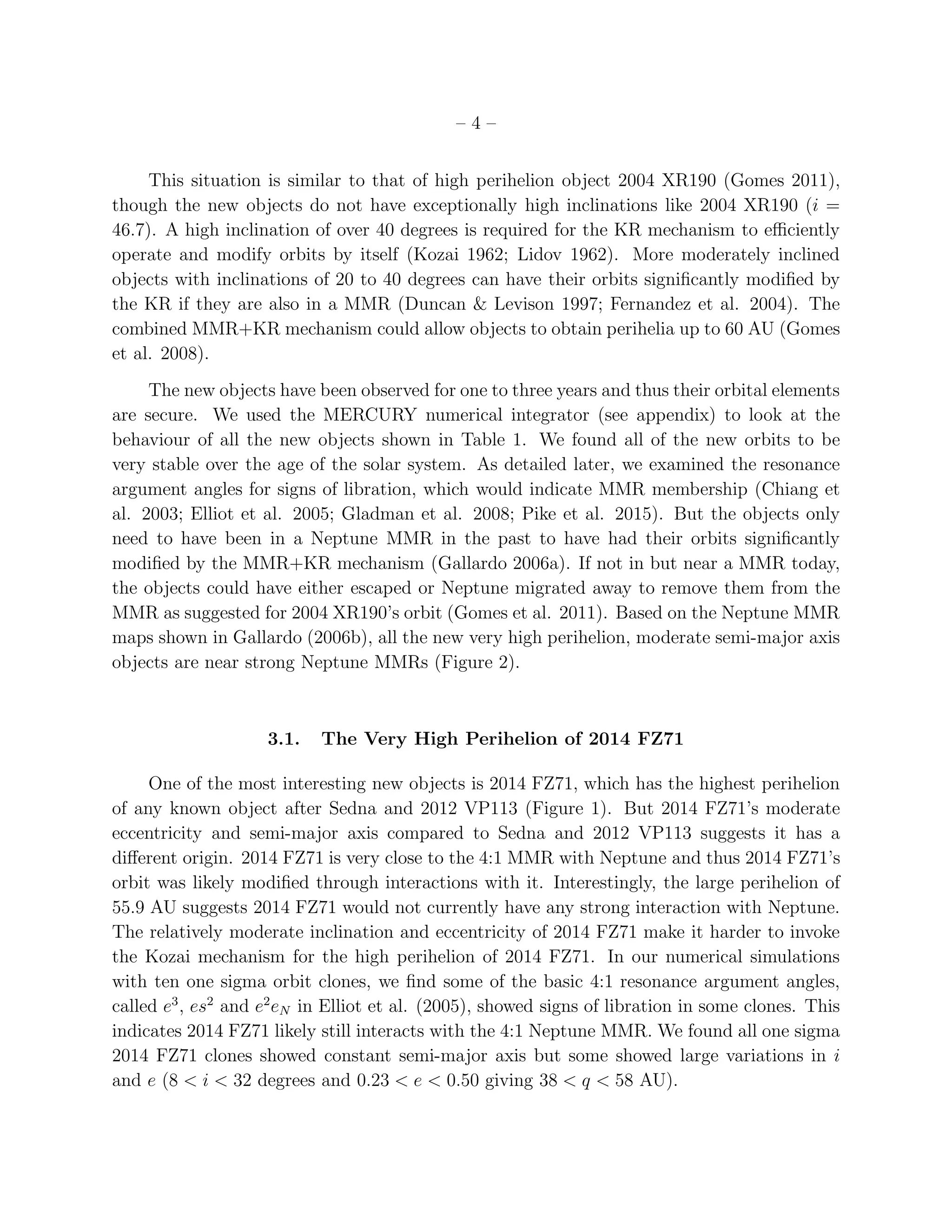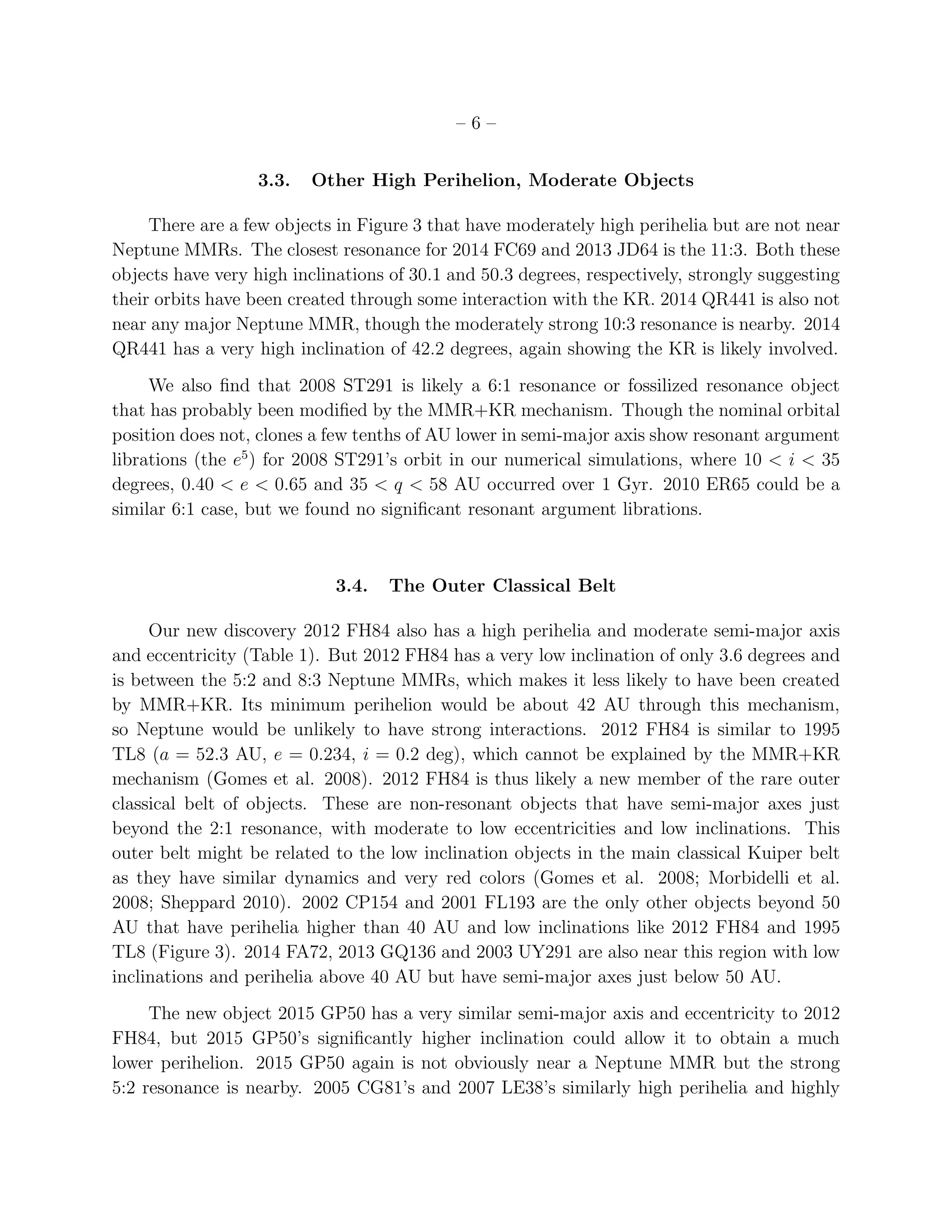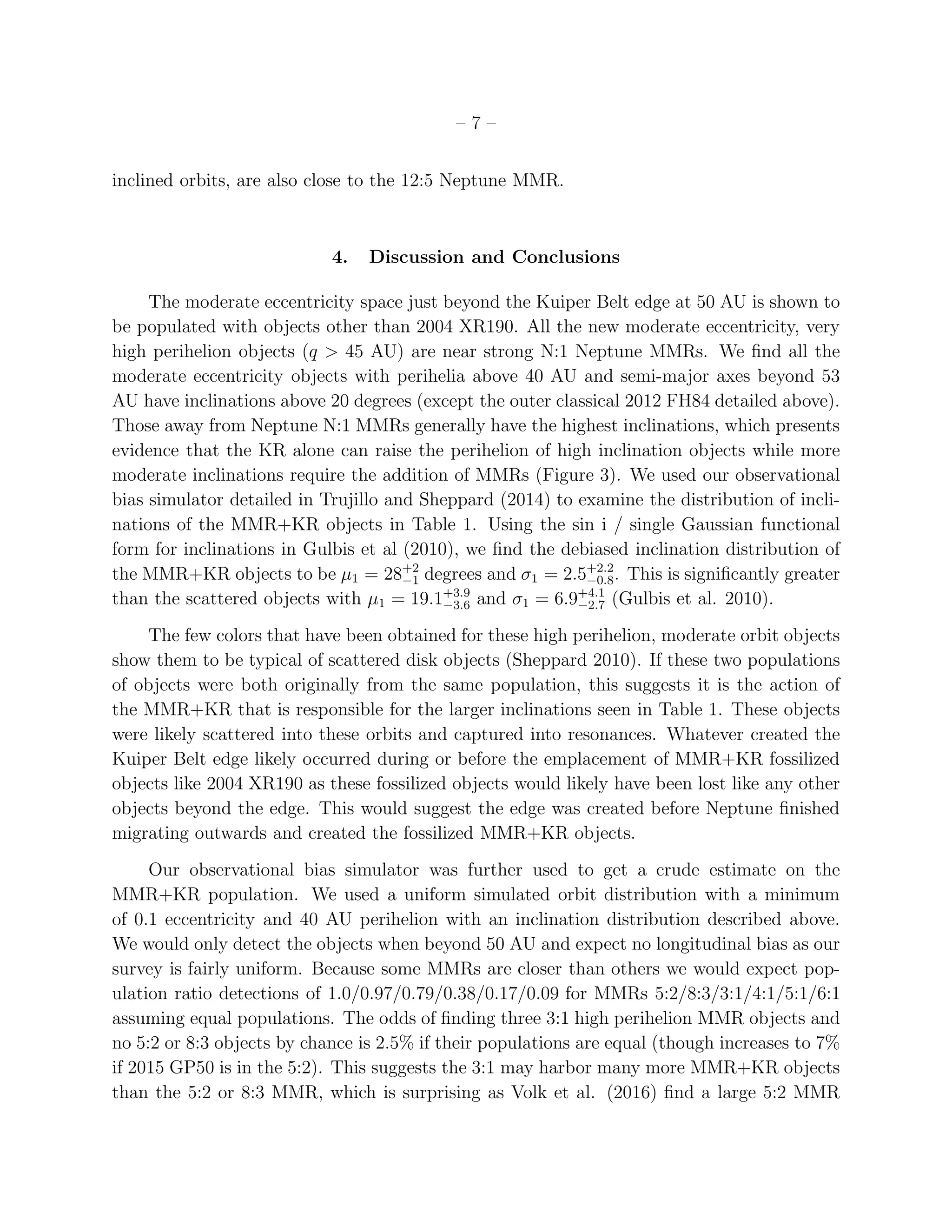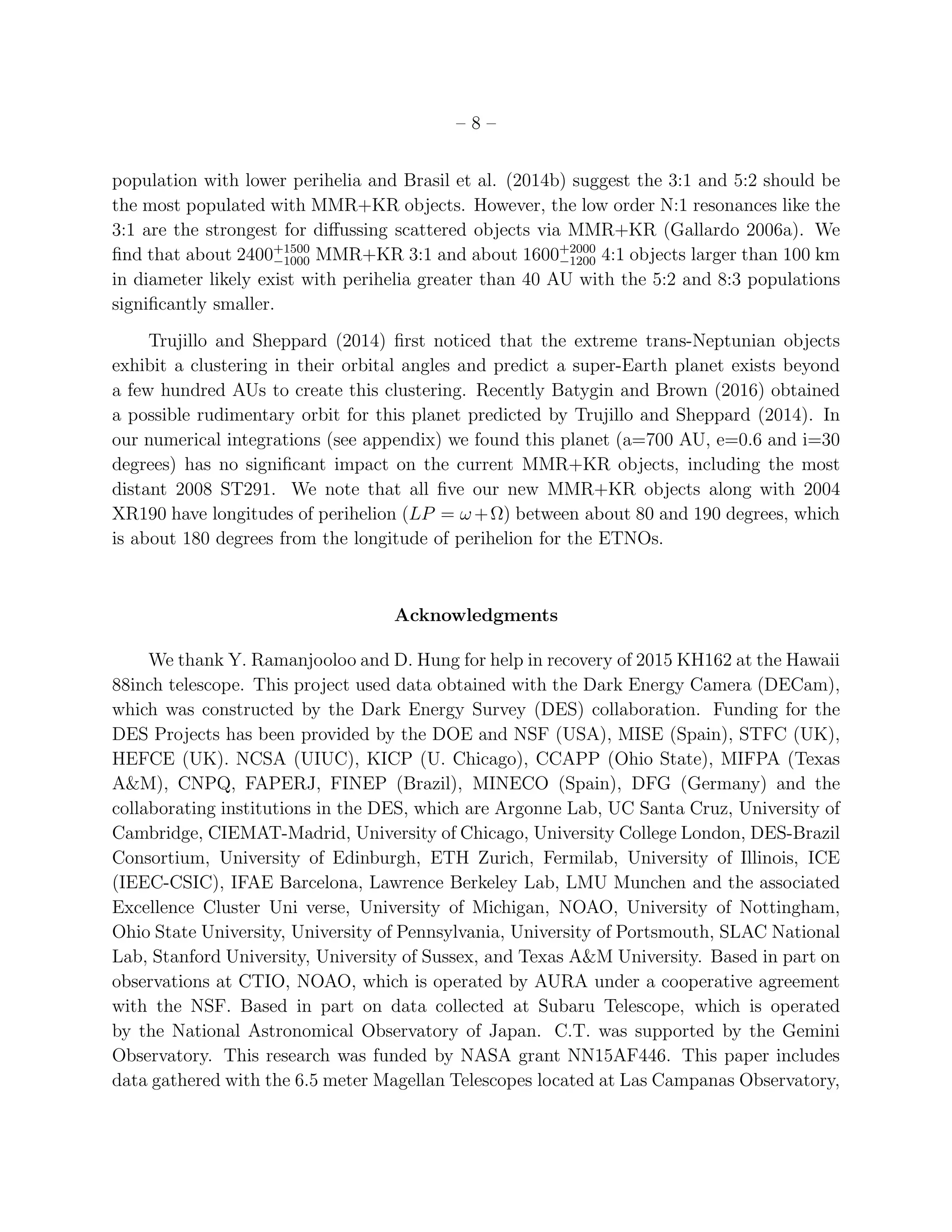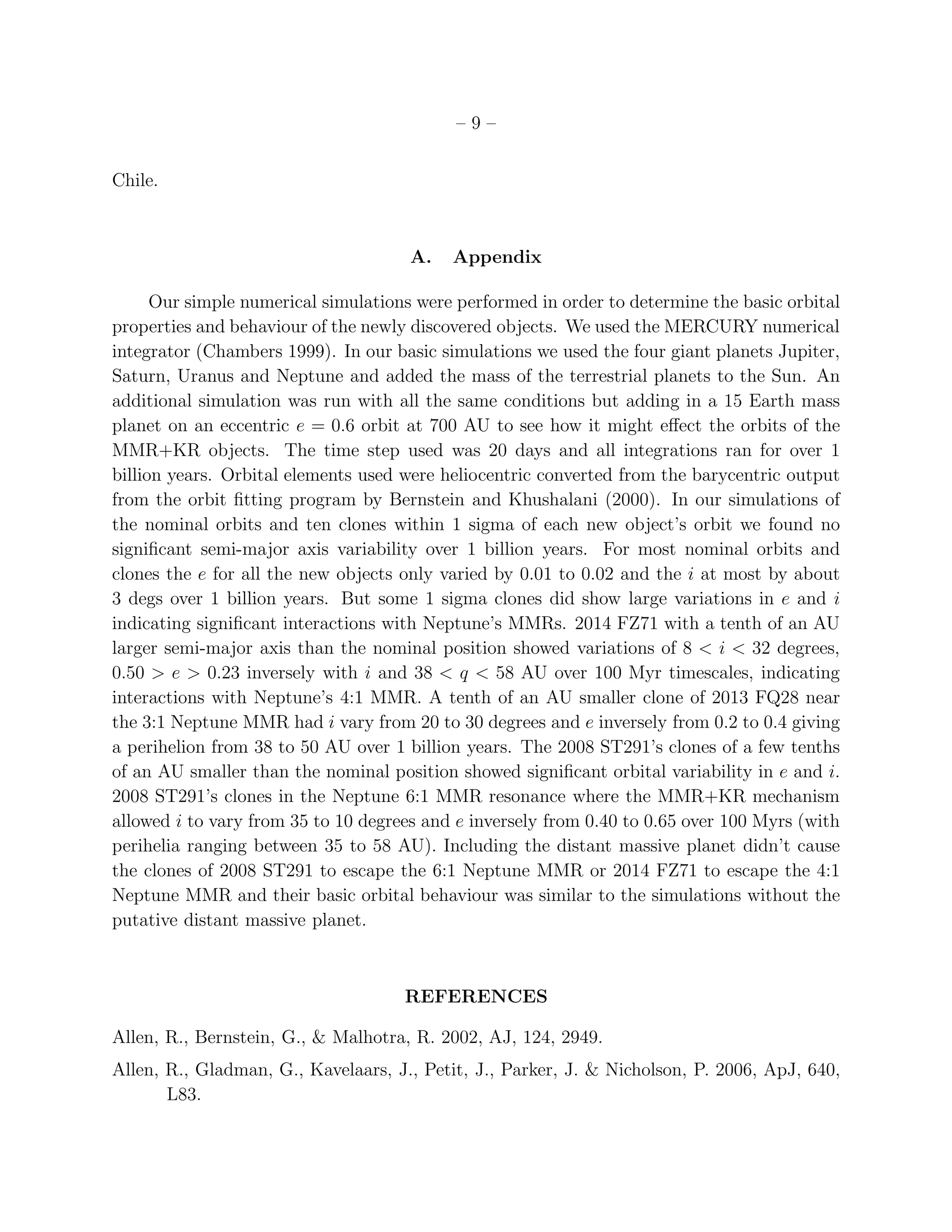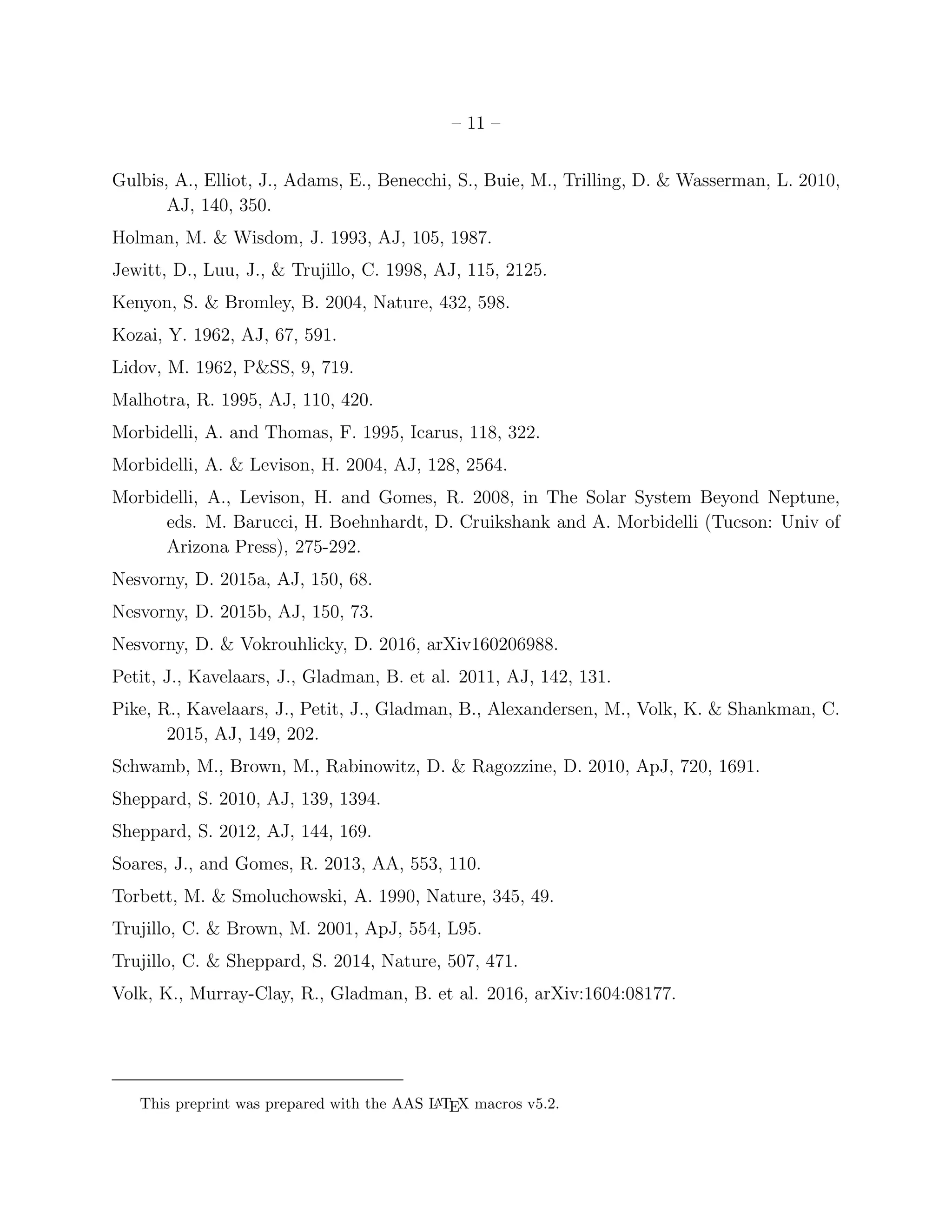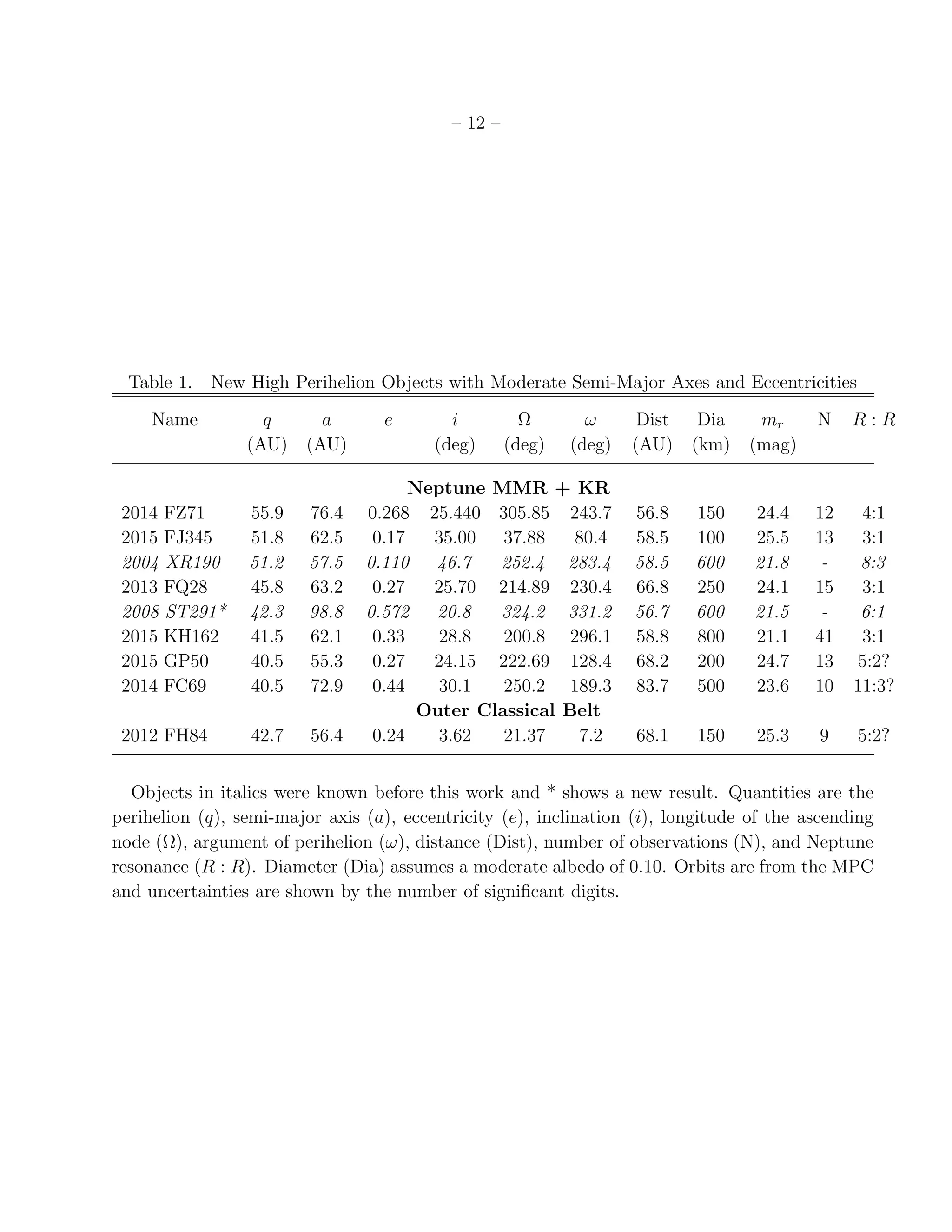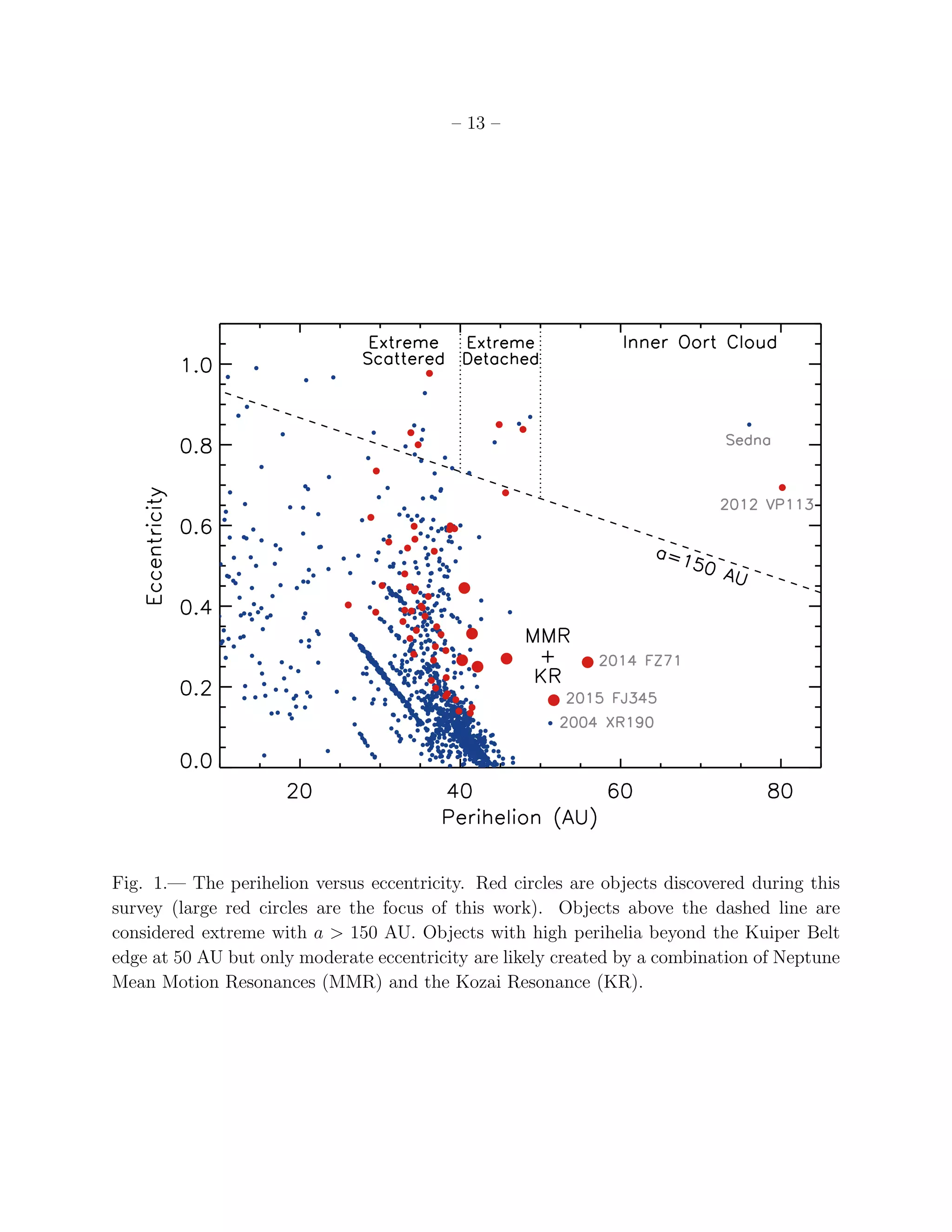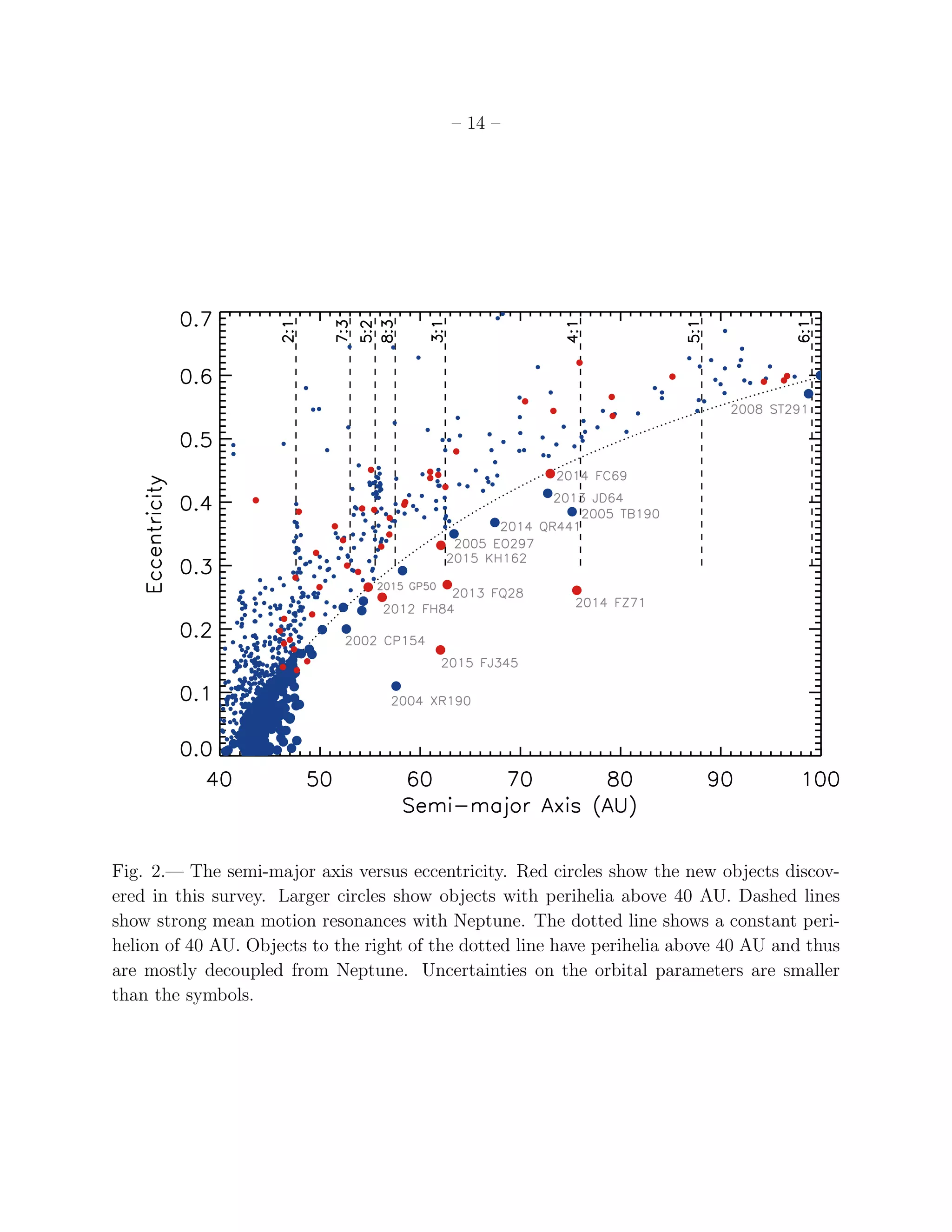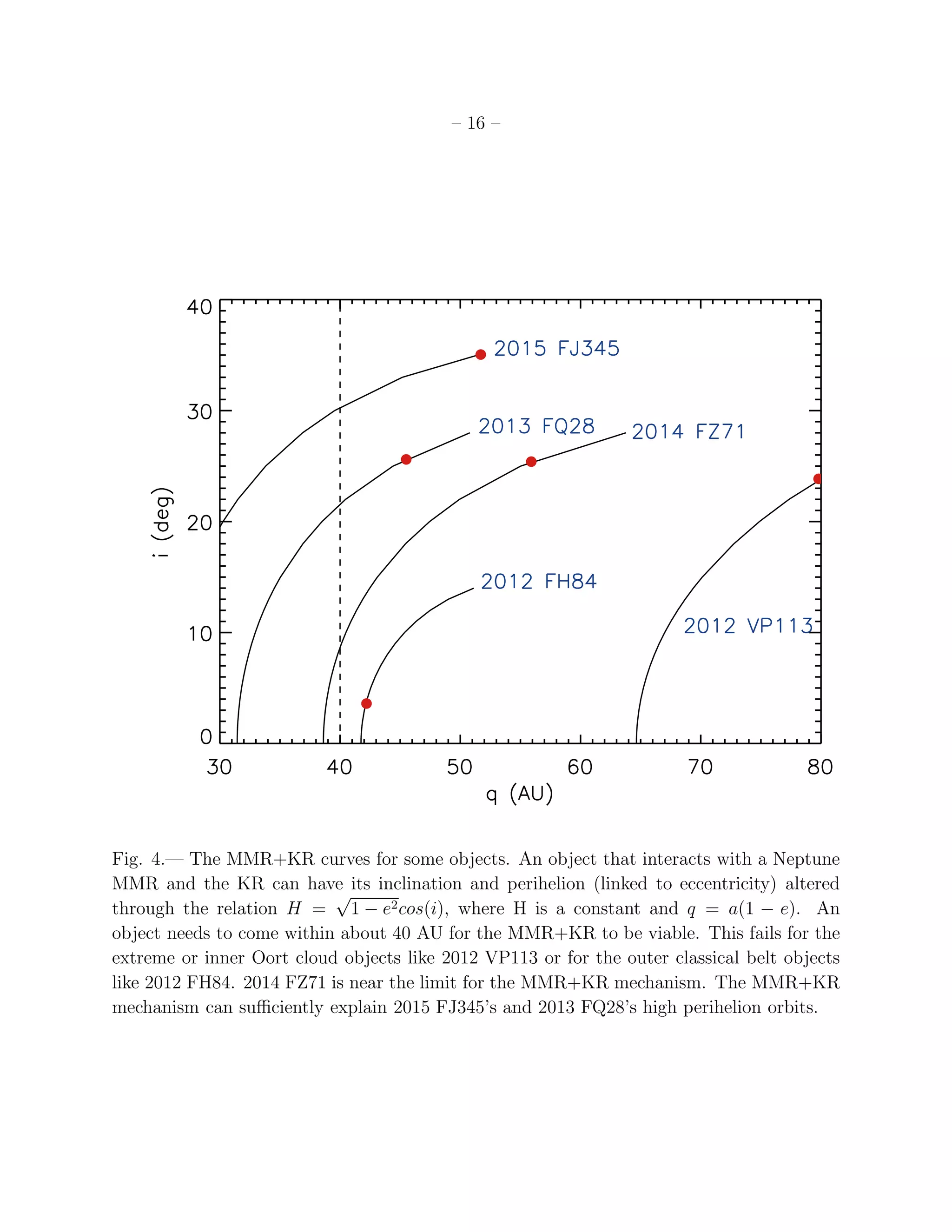This study reports the discovery of several high perihelion trans-Neptunian objects beyond the Kuiper Belt edge, characterized by moderate semi-major axes and eccentricities. These objects, including 2014 FZ71 and 2015 FJ345, likely obtained their unusual orbits through interactions with Neptune's mean motion resonances and the Kozai resonance. The findings add to our understanding of the structure of the outer solar system and support theories of a massive planet existing beyond a few hundred astronomical units.
![arXiv:1606.02294v3[astro-ph.EP]22Jun2016
Beyond the Kuiper Belt Edge: New High Perihelion
Trans-Neptunian Objects With Moderate Semi-major Axes and
Eccentricities
Scott S. Sheppard1
, Chadwick Trujillo2
and David J. Tholen3
ABSTRACT
We are conducting a survey for distant solar system objects beyond the Kuiper
Belt edge (∼ 50 AU) with new wide-field cameras on the Subaru and CTIO tele-
scopes. We are interested in the orbits of objects that are decoupled from the
giant planet region in order to understand the structure of the outer solar sys-
tem, including whether a massive planet exists beyond a few hundred AU as first
reported in Trujillo and Sheppard (2014). In addition to discovering extreme
trans-Neptunian objects detailed elsewhere, we have found several objects with
high perihelia (q > 40 AU) that differ from the extreme and inner Oort cloud
objects due to their moderate semi-major axes (50 < a < 100 AU) and eccen-
tricities (e 0.3). Newly discovered objects 2014 FZ71 and 2015 FJ345 have
the third and fourth highest perihelia known after Sedna and 2012 VP113, yet
their orbits are not nearly as eccentric or distant. We found several of these high
perihelion but moderate orbit objects and observe that they are mostly near Nep-
tune mean motion resonances and have significant inclinations (i > 20 degrees).
These moderate objects likely obtained their unusual orbits through combined
interactions with Neptune’s mean motion resonances and the Kozai resonance,
similar to the origin scenarios for 2004 XR190. We also find the distant 2008
ST291 has likely been modified by the MMR+KR mechanism through the 6:1
Neptune resonance. We discuss these moderately eccentric, distant objects along
with some other interesting low inclination outer classical belt objects like 2012
FH84 discovered in our ongoing survey.
Subject headings: Kuiper belt: general – Oort Cloud – comets: general – mi-
nor planets, asteroids: general – planets and satellites: individual (Sedna, 2012
VP113, 2004 XR190, 2008 ST291, 2014 FZ71, 2015 FJ345, 2012 FH84)
1
Department of Terrestrial Magnetism, Carnegie Institution for Science, 5241 Broad Branch Rd. NW,
Washington, DC 20015, USA, ssheppard@carnegiescience.edu
2
Gemini Observatory, 670 North A‘ohoku Place, Hilo, HI 96720, USA
3
Institute for Astronomy, University of Hawai’i, Honolulu, HI 96822, USA](https://image.slidesharecdn.com/beyondkuiperbeltedgenewhighperiheliomtransneptunianobjectswithmoderatesemimajoraxisandeccentricities-160829230132/75/Beyond-the-Kuiper-Belt-Edge-New-High-Perihelion-Trans-Neptunian-Objects-With-Moderate-Semi-major-Axes-and-Eccentricities-1-2048.jpg)
